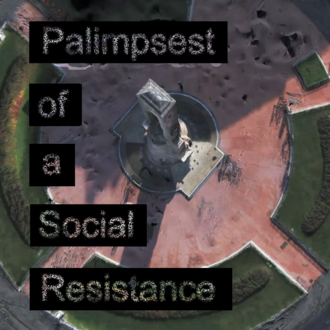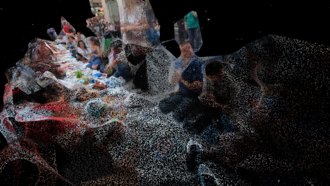Palimpsest of a Social Resistance
Resistance actions form temporary utopian microcosms of democracy within the existing systems. The physical, social and political atmosphere of these realized utopias - as proposed by Foucault heterotopias - are essential for expressing and reversing the existing social orders. Social movements transform their surroundings in various ways: through barricades, graffiti, murals, flyers, and vandalism. These changes in public spaces possess value for societal memory. However, they are temporary by their nature, as the system works to erase the reminders of the disobedience act from the public environment. Collective memories are tied to our surroundings; when surroundings change, the connection between memory and space gets lost. This project investigates the possibilities of creating non-linear and non-authoritarian narration by collecting memories attached to a public space. A palimpsest of a Social Resistance is a VR storytelling experience translating found images and videos of the Gezi Park protest into 3d objects and combining them with a series of interviews to tell the story with a documentary approach. This VR environment aims to start a discussion on the transformation of the city, preservation of collective memories, and other topics like civil resistance, democracy, and freedom of speech.
Master-Thesis WiSe 2021/22
Didem Zeynep Ödemis
1st examiner: Professur Sozialwissenschaftliche Stadtforschung
Prof. Dr. phil. habil. Frank Eckardt
2nd examiner: Professur Gestaltung medialer Umgebungen
Jörg Brinkmann
3nd examiner: Regina Reusch
Protests are an integral part of democratic societies as being a way of expressing thoughts and challenging existing social constructs. The act of resistance is a solid tool to criticize authorities and stimulate a change in the social order. Social movements form temporary heterotopic environments inside the everyday social orderings. These spaces are valuable as they challenge the existing social orders thus allowing people to act differently, and engage in the work of freedom.
The Taksim Gezi Park protest was a unique example of Turkish resistance culture as it formed a heterotopic environment in the city. Power conflicts take place in symbolic spaces in cities that are charged with meaning. The Taksim area ,as a historically and culturally important area, is the main resistance space in the city as well as a subject of the identity building process of authorities. Currently, the area has been transforming significantly. Constant construction and deconstruction of its urban structures harms the collective memories attached to the area.
Virtual environments can be memory spaces, and be used to preserve the disappearing memories of the physical world. Ignorance in the mainstream media towards the protests caused digital platforms to be used widely for communication. As a result, an immense amount of digital records of the protest are produced collectively by the society. After almost a decade these documentations are disappearing from the digital environments. The project started with the aim of preserving the disappearing digital records of the protest. Remaining images, videos and sounds related to the protest are used as a base to form a virtual memory space by using a game engine. 3d scanning, and 3d sound design and conducted interviews are used to design an immersive narrative experience. The narration focuses on memory, and remembering in the context of Taksim and Gezi Protests. VR storytelling experience invites people to make contributions to the narration with their stories and thoughts and start a conversation on the city, and its citizens through the markers of the collective memory.





